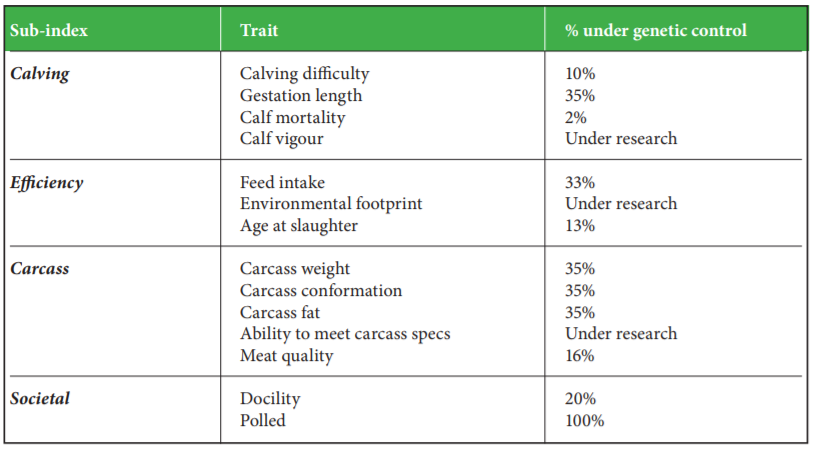It is no secret that the expansion of the dairy herd has resulted in more dairy-bred beef being marketed through the factories.
With the dairy herd set to reach new heights, more and more dairy-influenced stock will be available for beef production in Ireland. However, with the growing dairy herd, the quality of Irish beef production is at risk of deterioration.
Speaking at the National Beef Conference on Tuesday, Teagasc’s Dr. Donagh Berry presented a dairy-beef index which ranks beef bulls for use on dairy cows.
It is based on their estimated genetic potential to produce profitable, high-quality cattle, that – when born – have minimal effect on the performance of the dairy cow.
“It is a compromise of what the dairy farmer wants and what the beef farmer wants. It’s not exactly perfect for everybody, but it is definitely a compromise,” Dr. Berry explained.
“There is phenomenal variability within a breed. There is an opportunity to improve the quality of the animals from the dairy beef herd, without a massive compromise from a dairy farmer’s perspective.
“The down side to this is that the dairy man is obviously selecting for milk production and fertility and this has repercussions for the carcass merit of those animals.
“If we look at the quality of these carcasses that are coming from the dairy herd – just from the dairy herd – over the last four years, we are seeing a deterioration in the carcass quality.”
Touching on the success of the Economic Breeding Index (EBI), he said: “The EBI has been hugely successful over the past 18 years; our dairy cow is getting more fertile and the compactness of calving is improving considerably.
Rather than breeding to dairy bulls for eight-to-10 weeks, they are now bringing this down to maybe six weeks and using the remainder of the breeding season to breed to beef bulls.
“However – for the dairy man – they want a short gestation, easy-calving bull and we know – based on genetics – on average that equates to poorer conformation and poorer carcass weights, because it is a smaller calf.
“We need to create an index which is easy to use, so the dairy farmer can see the ranking of the bulls that are going to be better for their dairy cow.
“She is going to have plenty of milk and she is going to go back in calf as quickly as possible, but it will also give a decent calf that can be sold on,” he added.
The index
The proposed index includes traits related to calving performance, efficiencies of production, carcass merit (yield and quality), as well as addressing societal demands.
Ongoing research has shown that gains in calf suitability for beef production can be achieved through selection on an index, while – at the same time – meeting the requirements of dairy farmers for ease of calving.
This moves away from the focus on shorter gestation length and easy calving bulls, with no consideration of the finishing qualities of the calf.
Dr. Berry also outlined that an additional metric can be derived to identify bulls that have good evidence that they will be either low or moderate risk to mate with heifers.

List of traits and their sub-indexes which could make up a dairy-beef breeding index. Source: Teagasc
Will dairy farmers use the index?
Commenting on the uptake of this index by dairy farmers, Dr. Berry said: “It’s going to be totally dictated by market signals.
“If farmers use these estimates of the genetic merit of calves – to make a selection decision of how much they pay for that animal – that will drive the dairy farmer to say: ‘There is a few extra pound to be made from using this bull – with more or less the same calving difficulty – [so] why would I use a carcass-inferior animal compared to this bull?’
“If market signals are there from beef farmers to purchase those calves – because they know that they are genetically better – then I believe the dairy farmer will definitely use it.”
When will it be available?
Dr. Berry noted that research is still ongoing; however, he said: “It has to be approved by the ICBF (Irish Cattle Breeding Federation) board and this will be presented to them in November, with a view that, if it is ratified, it will be released in December.
“The goal is to publish the AI active bulls to start with and get the feedback. Once that is over the line, we can look at naturally mating bulls,” he added.
ICBF’s Dr. Andrew Cromie also commented on the index: “This new index will help to reverse the decline in carcass weight and conformation coming from the dairy herd.
“The sort of bulls are going to be coming up with 10kg, 12kg, 15kg of carcass weight, but with calving figures [so] that dairy farmers can be encouraged to use those bulls.
“The new dairy-beef index is going to reverse the decline in beef from the dairy herd and it will have the potential to increase margin by €100/head,” he said.

